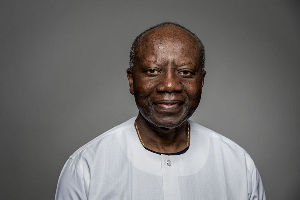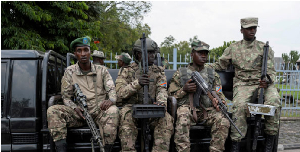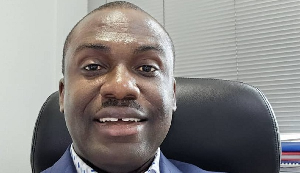Malaria is known as a major cause of child death in Africa, but a recent World Health Organisation (WHO) Report has revealed the reality is much worse than what has been reported.
The 2013 World Malaria Report commissioned by the WHO, shows malaria claimed 627,000 lives globally in 2012. In Ghana alone, between 3.1 and 3.5 million annual cases of clinical malaria were reported in public health facilities, of which 900,000 cases were children under the age of five.
Currently, Insecticide Treated Nets are the most accessible tool for fighting malaria in Ghana. These come in the form of conventional Insecticide Treated Nets (ITNs) and Long Lasting Insecticide Treated Nets (LLINs). The major concern with ITNs is that the nets are simply dipped in insecticide solution rather than treated at factory level and therefore the insecticidal efficacy of the nets is limited in time.
As a result, conventional ITNs must be retreated after one - three washes, or at least once a year, before the arrival of the rainy season. As many local villages in remote areas of Ghana are not well informed about how to properly maintain, and periodically retreat these nets, many communities that use conventional ITNs are still at risk.
In comparison, Long Lasting Insecticide Treated Nets (LLINs) are factory-treated nets. Some of them (Polyethylene nets) are even made with a special netting material that has insecticide incorporated within the fibres. This newer technology eliminates the need for re-treatment and keeps nets effective for up to five years, even after repeated washings. LLINs are one of the WHO’s most endorsed products for malaria prevention in Africa.
Despite great advances over the last decade, Ghana remains one of the countries worst affected by malaria. Many local experts have highlighted the importance of distributing LLINs to the more remote regions of the country which account for the most malaria deaths.
Dr Susu Kwawukume, Medical Director of Family Health Hospital in Accra, says the work to prevent malaria remains urgent in Ghana, especially in remote villages where it is more difficult to deliver nets.
”In Accra, most people have nets in their homes and are more educated about how to properly use them. But malaria prevention is not just a city issue, we need to get these nets to the remote regions where people are the most exposed and the most vulnerable. I’ve seen too many malaria cases that could have been easily prevented with a long lasting net.”
According to the US President’s Malaria Initiative Operational Plan (PMI), LLIN distribution focuses on antenatal care clinics, immunisation clinics and school-based distributions. Many of which, are likely to be situated in urban areas of the country.
Dr Henry Nagai, former Ghanaian Country Director of FHI 360 has worked to strengthen malaria prevention in Africa. Dr Nagai led a team responsible for distributing Long Lasting Nets directly to households in the PRU and the SENE districts of the Brong-Ahafo region of Ghana. His team was using a self-sustaining distribution model based on community small scale business units called License Chemical Sellers.
”For us LLINs are not just a preventative fact but a tool that is contributing to improving lives in communities in a holistic way. If people do not get malaria, they can go about their own work. It would keep children in schools, rather than going to the hospital back and forth.” says Dr Nagai.
“What we have been doing was to ensure that these nets are provided directly to organisations that are working within communities and have staff who come from the community – so that they can distribute nets directly to households they know in their own community and also provide health education to people on the proper use of bed nets.” He adds.
Dr Nagai believes there is a major issue with net availability and many communities do not have nets despite the universal access to net policy. He argues that there is the need to have more support from different organisations in a concerted effort to provide nets in 2014.
In addition to the shortage of nets in various communities in Ghana, Dr Nagai says there are also physical constraints on the distribution of nets to some communities who need it most due to a poor road network.
"We have had challenges with the central government with the availability and distribution of nets. Governments have shown rhetorical commitments for the prevention and control of malaria but do not provide the requisite funding for the various interventions that are known to work. They have other competing priorities and investing directly into malaria prevention is not a key priority in the face of extreme pressure on the national budget to pay salaries based on the recent single spine salary system”.
This is also illustrated in the WHO Report which shows local distribution of LLINs has failed to increase at all over the past two years, despite higher production.
Mr Samuel Nkansah of GlaxoSmithKline, an organisation that provides malaria treatment to local Ghanaian communities agreed with Dr Nagai’s comments, saying; “Whenever there is a commodity, things hinge on the supply and demand of that commodity. In light of this fact, there should be an assured supply of nets in Ghana.”
However Dr Nagai is positive about the future and believes the key objective for 2014 should be ensuring the Long Lasting nets reach those communities who need them the most through a concerted effort of a mix of development partners and non-governmental institutions and agencies.
Health News of Wednesday, 29 January 2014
Source: Hannah Brandstaetter | Media Zoo
















